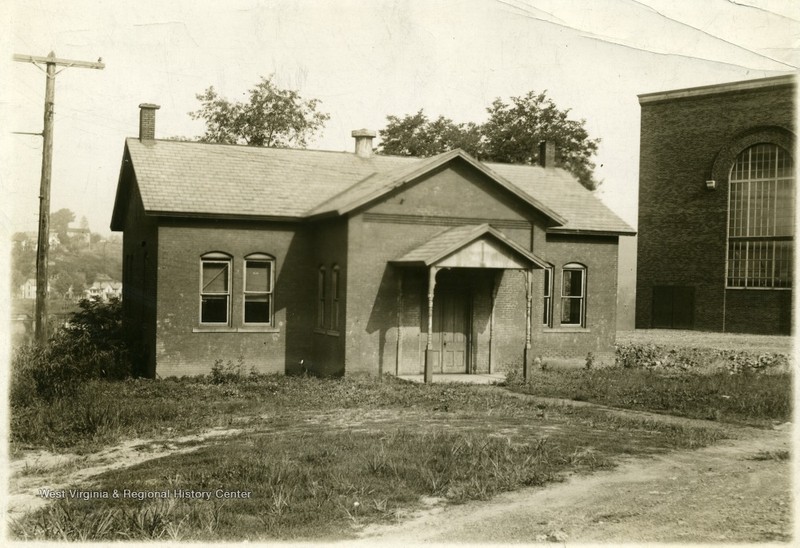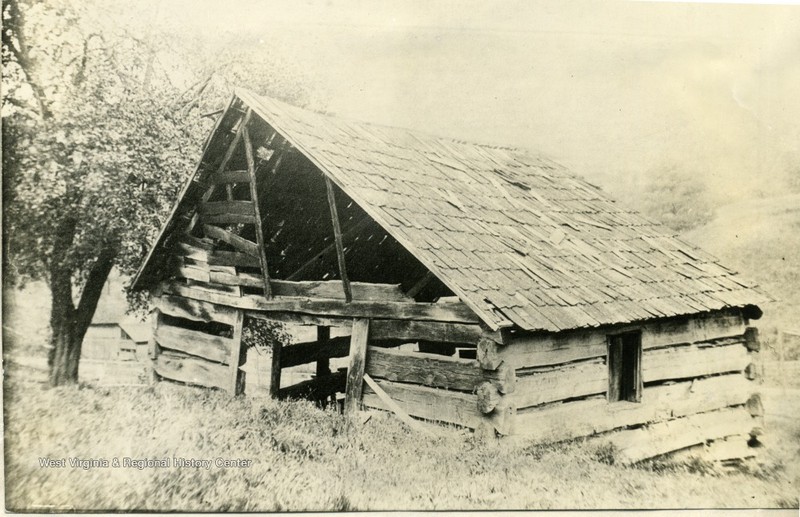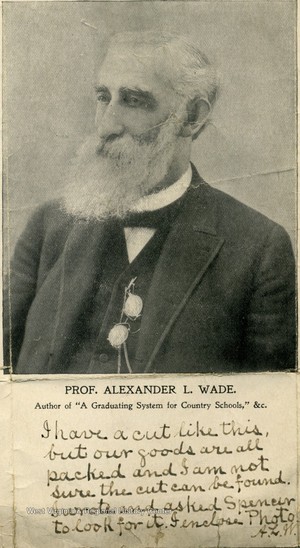Wade School (188-1929)
Introduction
Text-to-speech Audio
Images
Wade School ca. 1929-1940

The deteriorating schoolhouse near Core, WV, where Wade first taught in 1848

Portrait of Wade

Backstory and Context
Text-to-speech Audio
Alexander Luark Wade was born near Rushville, Indiana on February 1, 1832. His family moved to Monongalia county in 1839, though at the time it was still part of Virginia. In 1848 at just sixteen years old, Wade began teaching at a small schoolhouse near the town of Core. He continued teaching until 1861 when he was elected the first recorder of Monongalia County under the newly established West Virginia state. He held this office until 1871, when he was made Principal of the Public Schools in Morgantown. A few years later he became Monongalia County School Superintendent. In the early 1880s, Wade resigned his post as superintendent to return to being a principal. It was during this time that he taught at the Wade School.
The Wade School was built around 1880 on a lot now occupied by a West Virginia University parking lot. The building was a simple one-story brick structure. The presence of three chimneys on the roof suggests that the interior design of the schoolhouse was a central hallway flanked by two classrooms, but this is not certain. Designed to serve the local African American population, the Wade School was one of the first schools in the area that educated non-white residents.
Part of Wade’s motivation to return to being a principal rather than a superintendent lay in his teaching philosophy. As superintendent, Wade implemented a system of eight grades and advancement based on standardized exams. Wade even published an 1881 book, “A Graduating System for Country Schools,” which led to the adoption of his system across the country. If this system sounds familiar, it should, as the Wade’s system is still a defining feature of America’s education system today. Wade wanted to see the performance of his ideas first-hand and the Wade School served as a perfect opportunity to experience this. Wade was an extremely progressive figure for his time. His choice to teach at an African American school demonstrates in his belief that education should be open to all. Wade taught at this school for several years before accepting a position at the American Institute of Civics.
In 1929, the Wade School was closed when several African American schools in the Morgantown area were consolidated. The building was acquired by WVU and continued to serve a variety of functions. In the 1940s, the structure was renamed to the Laboratory Elementary School and part of a WVU experiment to give education students hands-on experience teaching courses. However, this program was not long-lived and the Wade School building was demolished in the 1950s or 1960s.
Sources
"Alexander Wade." Morgantown Evening Post (Morgantown) May 2nd 1904. .
"Alexander Wade." Morgantown Evening Post (Morgantown) May 6th 1904.
Forbes, Harold Malcolm. Alexander Luark Wade, The West Virginia Encyclopedia. December 9th 2015. Accessed July 22nd 2020. https://www.wvencyclopedia.org/articles/881.
Marshall, Charlene. The African American Experience in Morgantown During the Years of Segregation and After, Morgantown History Museum. Accessed July 22nd 2020.
http://www.morgantownhistorymuseum.org/images/charlene%20marshall-total-2017-11-05.pdf.
Mendinghall, Joseph S. Alexander Wade House, National Register of Historic Places. November 26th 1980. Accessed July 22nd 2020. https://npgallery.nps.gov/NRHP/GetAsset/NHLS/66000752_text.
West Virginia & Regional History Center
West Virginia & Regional History Center
West Virginia & Regional History Center
